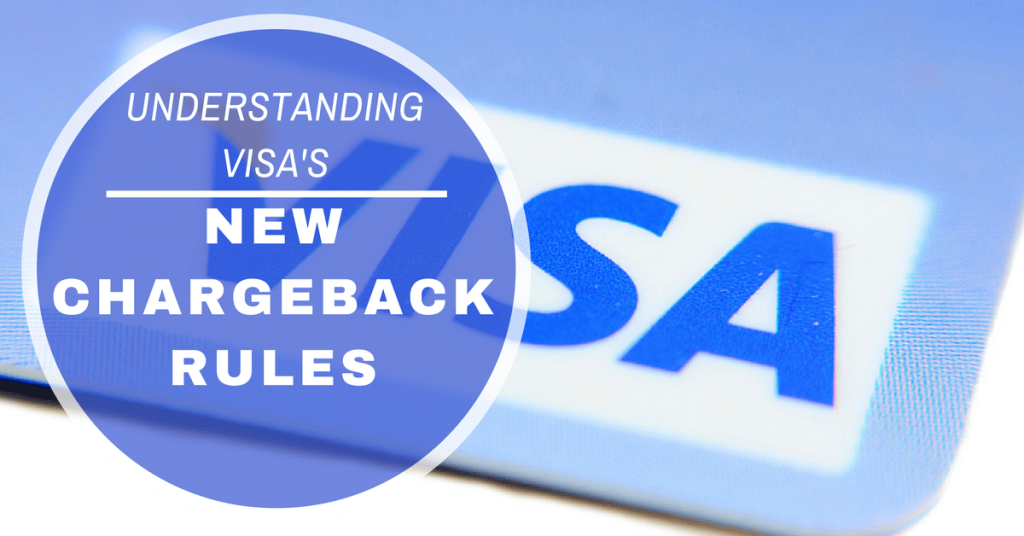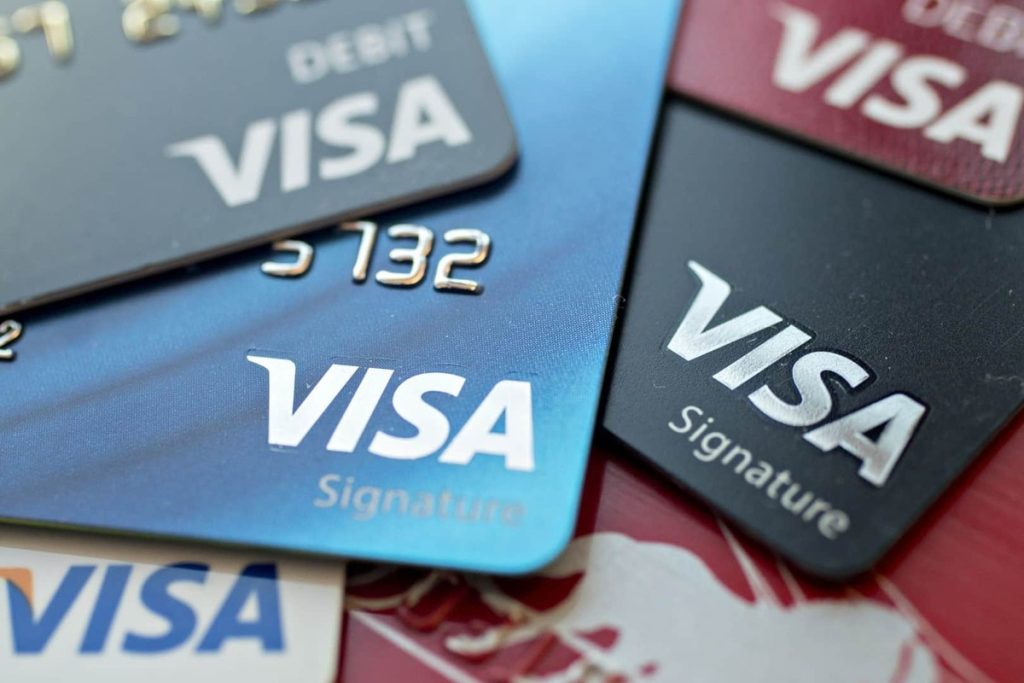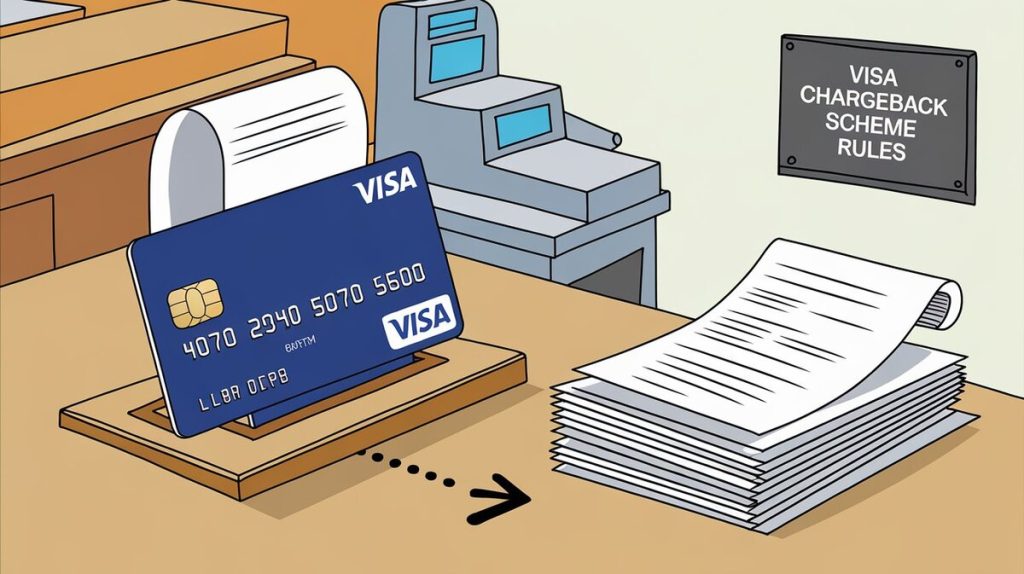Visa chargebacks are critical for merchants to understand as they directly impact financial stability. Visa has strict rules that govern chargebacks, designed to protect consumers from fraudulent transactions and ensure fairness. This article provides a clear, concise overview of these rules, the categories of disputes, recent changes, and best practices for managing and preventing chargebacks.
What is a Visa Chargeback?
A Visa chargeback allows a cardholder to dispute a transaction and request a refund from their issuing bank. Introduced to protect consumers, chargebacks can be triggered by various reasons like unauthorized transactions or goods not received. Chargebacks protect consumers, but they can be costly for merchants. In 2023, global chargeback losses reached approximately $31 billion, illustrating the significant financial impact on businesses.
Visa Chargeback Categories and Reason Codes
Visa organizes chargebacks into four main categories, each associated with specific reason codes that describe the nature of the dispute. Understanding these categories helps merchants respond effectively.
1. Fraud
Fraud-related chargebacks occur when a transaction is unauthorized or when a fraudster uses stolen card credentials. Visa’s Fraud Monitoring Program (VFMP) tracks merchants with high fraud ratios. Exceeding thresholds can lead to severe consequences, including fines or termination of the merchant’s account. Common reason codes include:
- 10.4 Other Fraud: Typically used for card-not-present transactions where the cardholder claims they did not authorize the transaction.
- 10.1 EMV Liability Shift: Related to fraud that occurs when a merchant does not support EMV chip transactions.
2. Authorization
Authorization chargebacks arise when there is an issue with the transaction’s authorization. For example, if a merchant processes a transaction without proper authorization or ignores a declined authorization, it can be disputed. Key reason codes include:
- 11.3 No Authorization: Indicates the merchant processed a transaction without obtaining the necessary authorization.
- 11.4 Expired Card: Refers to transactions processed on an expired card.
3. Processing Errors
Processing errors happen when there is a mistake during the transaction process, such as incorrect amounts, duplicate charges, or currency conversion errors. Common reason codes in this category include:
- 12.5 Incorrect Amount: Disputes raised due to charging an amount different from what was authorized.
- 12.6 Duplicate Processing: Occurs when a transaction is processed more than once.
4. Consumer Disputes
Consumer disputes arise when the cardholder is dissatisfied with the transaction, such as not receiving goods or services as promised, or when the product received does not match the description. Important reason codes include:
- 13.1 Goods or Services Not Received: Used when the cardholder claims that they did not receive the goods or services paid for.
- 13.3 Not as Described or Defective Merchandise: When the delivered goods are not as described or are faulty.
Table 1: Common Visa Chargeback Reason Codes and Categories
| Category | Reason Code | Description |
|---|---|---|
| Fraud | 10.4 | Unauthorized transaction in a card-not-present environment |
| Authorization | 11.3 | Transaction processed without proper authorization |
| Processing Errors | 12.5 | Incorrect amount charged |
| Consumer Disputes | 13.1 | Goods or services not received |
| Consumer Disputes | 13.3 | Goods not as described or defective |

Visa Chargeback Rules and Regulations
Visa has strict rules that merchants must follow when processing transactions and handling chargebacks. Compliance is critical to avoid penalties and ensure smooth transaction processing.
1. Visa Dispute Monitoring Program (VDMP)
The Visa Dispute Monitoring Program (VDMP) tracks merchants’ chargeback ratios to identify those who exceed acceptable thresholds. The thresholds are:
- Early Warning: 0.65% chargeback ratio and 75 chargebacks per month.
- VDMP Standard: 0.9% chargeback ratio and 100 chargebacks per month.
- VDMP Excessive: 1.8% chargeback ratio and 1,000 chargebacks per month.
Merchants exceeding these thresholds must implement corrective measures to reduce their chargeback ratios. Failure to comply can result in fines or termination of merchant accounts.
2. Visa Fraud Monitoring Program (VFMP)
The Visa Fraud Monitoring Program (VFMP) monitors fraud-related chargebacks. Merchants with high fraud rates may be subject to additional scrutiny and required to implement stronger fraud prevention measures. The VFMP categorizes merchants into different tiers based on their fraud ratios, with stricter penalties for those in higher tiers.
Recent Changes in Visa Chargeback Rules: Compelling Evidence 3.0
In April 2023, Visa introduced Compelling Evidence 3.0 to reduce fraud and disputes by requiring merchants to provide stronger evidence when contesting chargebacks. Under this mandate, merchants must present proof that the cardholder participated in the transaction, received the goods or services, or benefited from the transaction.
Benefits of Compelling Evidence 3.0:
- Reduces fraud and dispute ratios: By requiring stronger evidence, the mandate helps reduce fraudulent chargebacks.
- Lowers revenue loss: With more disputes resolved in favor of merchants, businesses can retain more revenue.
- Decreases processing costs: Streamlined dispute processes reduce the time and resources needed to handle chargebacks.

Best Practices for Managing and Preventing Chargebacks
To minimize the financial impact of chargebacks, merchants should adopt these best practices:
1. Implement Fraud Prevention Tools
Fraud prevention is essential in reducing chargebacks, especially in card-not-present environments. Merchants should use EMV chip technology, tokenization, and address verification services (AVS) to validate transactions and prevent unauthorized charges.
2. Maintain Clear Communication with Customers
Clear communication with customers can prevent misunderstandings that lead to chargebacks. Merchants should:
- Provide detailed product descriptions: Ensure all product descriptions are accurate and match what is delivered.
- Use recognizable billing descriptors: Avoid confusion by using a billing descriptor that customers can easily associate with their purchase.
- Offer responsive customer service: Address customer inquiries and complaints promptly to prevent disputes from escalating into chargebacks.
3. Keep Accurate Records and Documentation
Proper documentation is essential when responding to chargebacks. Merchants should:
- Maintain detailed transaction records: Keep all records of transactions, including receipts, invoices, and communication with customers.
- Prepare evidence for disputes: Gather compelling evidence to contest chargebacks, such as delivery confirmation and proof of customer communication.
Table 2: Visa Dispute Monitoring Program Thresholds
| Program Tier | Chargeback Ratio | Monthly Chargebacks | Consequences |
|---|---|---|---|
| Early Warning | 0.65% | 75 | Notification and monitoring |
| VDMP Standard | 0.9% | 100 | Required corrective actions |
| VDMP Excessive | 1.8% | 1,000 | Fines and potential account termination |
Merchanto.org: Your Partner in Chargeback Prevention
Merchants seeking to minimize chargebacks and ensure compliance with Visa’s rules should consider Merchanto.org. As an official partner of Visa and MasterCard, Merchanto.org offers effective chargeback prevention solutions. Learn more about their offerings here.
Conclusion
Visa chargeback rules protect both consumers and merchants in the digital transaction landscape. Understanding the categories of disputes, staying updated on regulatory changes like Compelling Evidence 3.0, and implementing best practices can help merchants manage and reduce chargebacks.



